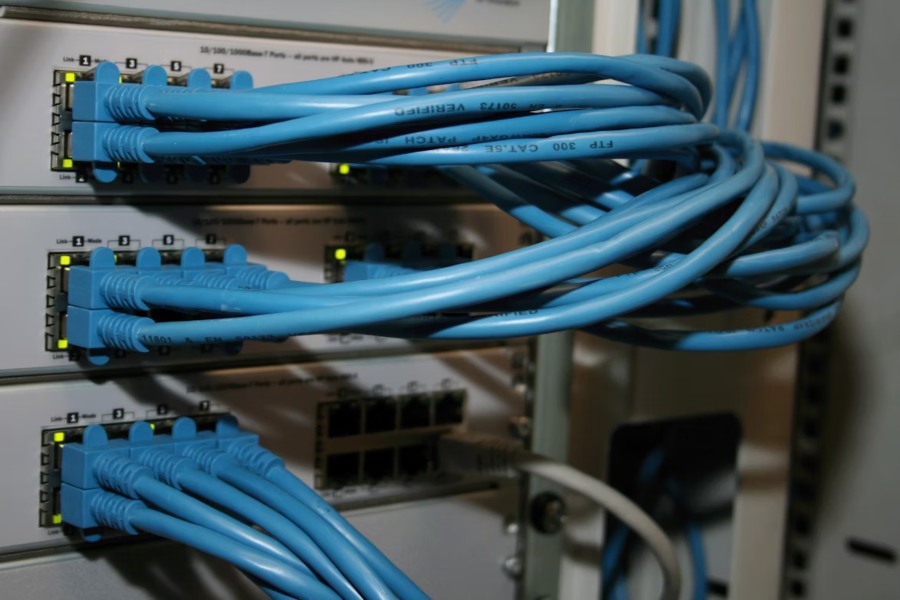
In the world of computer networking and IP addressing, understanding subnetting is critical for both seasoned professionals and beginners. One of the most commonly referenced subnet sizes is the “/30.” But exactly how many IP addresses in a /30 can be used? This seemingly simple question is essential for network engineers, cybersecurity experts, and system administrators who are responsible for efficient network planning and segmentation.
CIDR (Classless Inter-Domain Routing) notation simplifies IP address management. A /30 subnet denotes that 30 bits out of 32 are used for the network portion, leaving only 2 bits for host addresses. But not all those bits translate directly into usable IPs. Reserved addresses for network identification and broadcasting affect the available range.
Whether you’re configuring routers, planning point-to-point connections, or working in a data center environment, knowing how many IP addresses in a /30 are available is foundational knowledge. This blog post breaks down everything from the technical calculation to practical usage scenarios.
With simplified explanations, expert insights, and real-world use cases, you’ll walk away with a full understanding of /30 subnetting. We’ll also answer why it’s commonly used, when it’s ideal, and what pitfalls to avoid when deploying it.
What Does /30 Mean in IP Addressing?
Understanding CIDR notation is crucial before diving into how many IP addresses in a /30. CIDR, or Classless Inter-Domain Routing, uses suffixes like /30 to indicate how many bits are fixed in the network portion. /30 implies that 30 out of 32 bits in an IPv4 address are reserved for the network, leaving just 2 bits for host addresses.
But there’s a twist. Out of the four possible combinations from those 2 bits (2^2 = 4), two addresses are reserved: one for the network and another for broadcast. This means only two usable IP addresses are available for devices.
For example, in the subnet 192.168.1.0/30:
- 192.168.1.0 = Network address
- 192.168.1.1 = Usable IP
- 192.168.1.2 = Usable IP
- 192.168.1.3 = Broadcast address
These address blocks are frequently used for point-to-point WAN links because only two devices (like two routers) need to communicate.
Using a /30 helps reduce IP address wastage, especially in IPv4, where addresses are limited. Also, having fewer hosts in a subnet reduces the chances of broadcast storms and enhances security.
Another benefit of using a /30 subnet is simplified routing. With fewer devices, troubleshooting becomes easier, and it’s less likely that incorrect traffic will flood the network segment.
In conclusion, understanding what a /30 represents is the key to effectively planning and deploying IP addressing strategies in both small and enterprise networks.
Why and When to Use /30 Subnet Blocks
A /30 subnet is a compact and efficient option used primarily in point-to-point network connections. It allocates exactly four IP addresses—two of which are usable—making it ideal for scenarios where only two devices need to communicate directly, such as router-to-router or firewall-to-switch links.
Why Is /30 Common in Networking?
This subnet size is frequently used by Internet Service Providers (ISPs) and enterprises to establish WAN links or core interconnections. Its structure helps avoid IP waste by providing just enough addresses without over-allocating.
When Should You Use /30?
Apply a /30 when connecting exactly two endpoints. This is common in backbone connections, data center links, or telecom deployments where only two hosts are needed. It supports structured segmentation and maintains a lean network footprint.
Address Efficiency and Security
With only two usable addresses, /30 conserves IPv4 space effectively. It also offers enhanced security by limiting exposure, minimizing broadcast traffic, and reducing the potential for unauthorized access or lateral movement between hosts.
How to Calculate IPs in a /30 Subnet
A /30 subnet is a compact IP block used primarily in IPv4 networking. To determine how many IP addresses are in a /30, you can use the formula:
Total IPs = 2^(32 – subnet bits)
For a /30:
2^(32 – 30) = 4 IP addresses
Out of these four addresses, only two are usable for devices. The remaining two are reserved for the network and broadcast functions.
Here’s how the IPs are allocated in a /30 block:
- 1st IP Address: Network address (non-assignable)
- 2nd IP Address: Usable host #1
- 3rd IP Address: Usable host #2
- 4th IP Address: Broadcast address (non-assignable)
This makes a /30 ideal for situations where only two devices need to communicate—most commonly in router-to-router links or telecom point-to-point connections.
Key highlights of a /30 subnet:
- Usable IPs: 2
- Total IPs: 4
- Wasted IPs: None, when deployed correctly
- Efficiency: High in limited-host scenarios
- Scalability: Poor for expanding networks, as additional devices require new subnets
Understanding this calculation is crucial for efficient IP address allocation and network segmentation.
Benefits and Drawbacks of /30 IP Allocation
While the /30 subnet is a great tool for certain use cases, it comes with both advantages and limitations. One major benefit is minimal IP wastage, making it ideal for connecting exactly two devices. This is frequently applied in backbone networks where routers communicate with each other.
Another key advantage is its simplicity. Because it contains only four addresses, troubleshooting becomes easier. This also makes security management more straightforward due to limited access points.
However, the same reasons that make /30 efficient can also be drawbacks. Its design is not scalable. If a third device needs to be added to the same segment, a different subnet must be created.
Also, in IPv4-depleted environments, even allocating 4 IPs for 2 devices might be considered inefficient. Network architects often turn to /31 subnets in such cases, which offer 2 usable IPs without network and broadcast reservations, specifically for point-to-point links.
Despite its limitations, how many of IP addresses in a /30 remains a hot topic due to its relevance in routing protocols, especially OSPF and BGP, where stable and secure point-to-point connections are crucial.
SEO-Friendly Breakdown Using H3 Tags
A /30 subnet is a small but powerful network block widely used in point-to-point connections. Here’s a deeper look into its structure, use cases, and tools.
How Many IP Addresses in a /30 for IPv4?
A /30 subnet includes four total IP addresses in IPv4. Out of these, two are usable for host devices, one is reserved as the network address, and one is the broadcast address. This configuration is particularly useful in scenarios where only two devices need to communicate, such as in a point-to-point connection between routers.
How Does /30 Differ from Other Subnets?
Compared to larger subnets like /29, which provides eight IP addresses, or /28 with sixteen, the /30 subnet is far more limited. However, its efficiency lies in this limitation. A /30 block is best suited for tightly controlled network segments, minimizing unnecessary IP allocation while serving the precise need of two-host communication.
Where Do You See /30 Subnets in Real-World Networks?
In practice, /30 subnets are widely used in enterprise-level networks and telecommunications setups. They are frequently deployed in MPLS configurations and inter-router connections where minimal IP usage is essential without compromising connectivity or routing integrity.
How Secure is a /30 Subnet?
Security is another advantage of /30 subnetting. With just two hosts in a subnet, the attack surface is drastically minimized. Fewer devices mean fewer vulnerabilities, making these subnets easier to monitor and manage securely.
What Tools Help in Calculating /30 Subnets?
To plan and configure /30 networks accurately, IT professionals use IP subnet calculators, CLI tools like ipcalc, and built-in router commands. These resources streamline address allocation and reduce the chance of misconfiguration.
Conclusion
To sum up, knowing how many IP addresses in a /30 are usable is more than a trivia question—it’s a foundational aspect of smart, secure, and efficient network planning. With only two usable IPs, the /30 subnet is ideal for point-to-point connections where simplicity and precision are critical.
In today’s IP-constrained environments, using subnets like /30 wisely ensures optimal resource use. It supports streamlined routing and reduces overhead in both technical and administrative operations.
So the next time you’re designing a segment that only requires two hosts, you’ll know exactly where /30 fits in and how it works to your advantage.
FAQ’s
How many usable IP addresses are in a /30?
A /30 subnet provides exactly 2 usable IP addresses, making it ideal for point-to-point links between two network devices.
What is the total number of IP addresses in a /30 block?
There are 4 total IP addresses in a /30 block, with 2 reserved for the network and broadcast, and 2 available for host assignment.
When should I use a /30 subnet?
You should use a /30 subnet for direct connections between two devices, such as router-to-router or firewall-to-switch configurations.
Can /30 be used in IPv6?
Technically, yes, but it’s rarely used. IPv6 typically uses /64 subnets due to its vast address space and different network design standards.
What’s the difference between /30 and /31?
A /30 offers 2 usable IPs with 2 reserved, while/31 allows 2 usable IPs without reserving network or broadcast addresses, suited for very specific point-to-point use cases.





